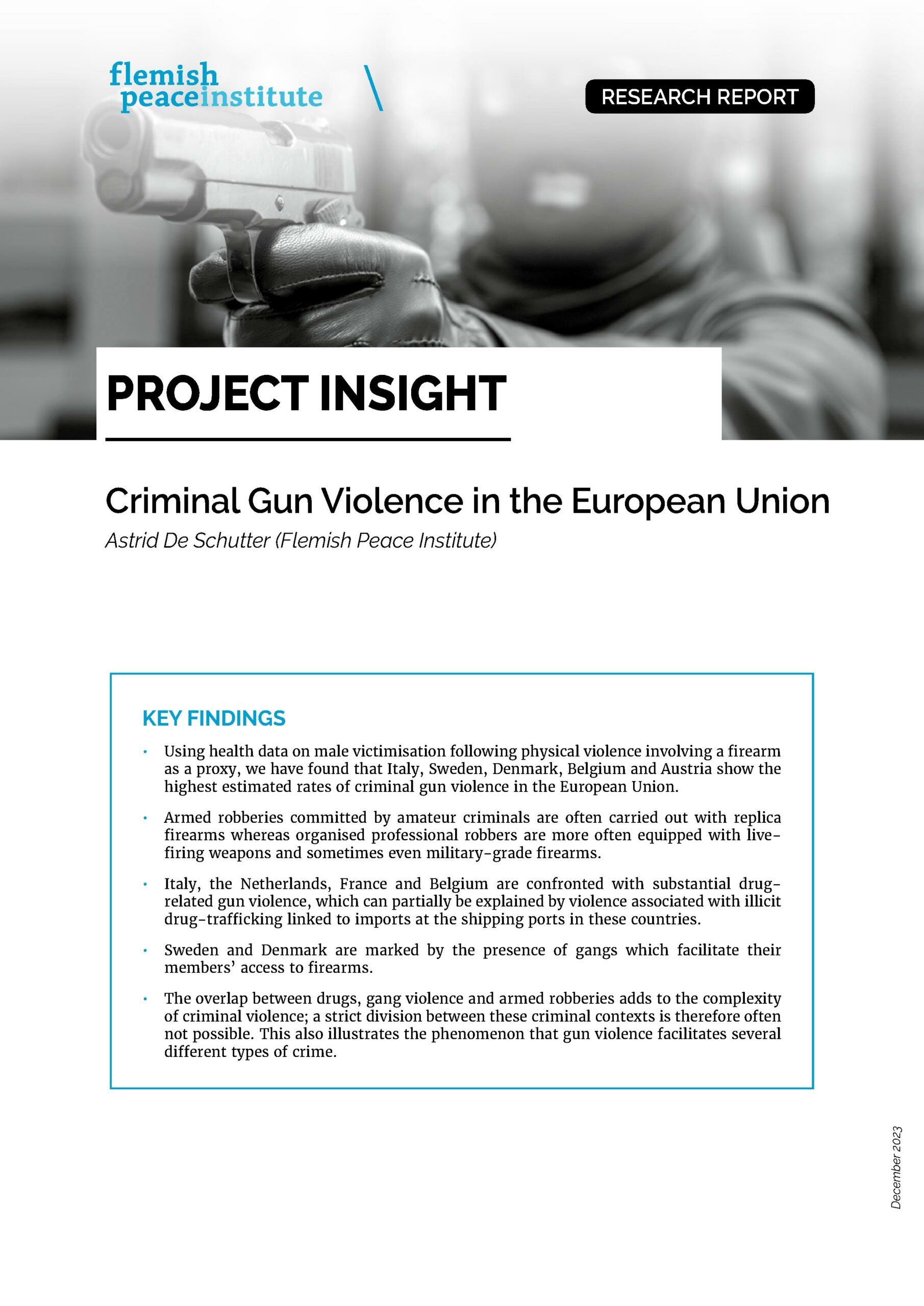Project Insight Research Report: Criminal Gun Violence in the European Union
Criminal Gun Violence in the European Union
Using health data on male victimisation following physical violence involving a firearm as a proxy, we have found that Italy, Sweden, Denmark, Belgium and Austria show the highest estimated rates of criminal gun violence in the European Union.
Armed robberies committed by amateur criminals are often carried out with replica firearms whereas organised professional robbers are more often equipped with live-firing weapons and sometimes even military-grade firearms.
Italy, the Netherlands, France and Belgium are confronted with substantial drug-related gun violence, which can partially be explained by violence associated with illicit drug-trafficking linked to imports at the shipping ports in these countries.
Sweden and Denmark are marked by the presence of gangs which facilitate their members’ access to firearms.
The overlap between drugs, gang violence and armed robberies adds to the complexity of criminal violence; a strict division between these criminal contexts is therefore often not possible. This also illustrates the phenomenon that gun violence facilitates several different types of crime.

About the author
Astrid De Schutter is a researcher at the Flemish Peace institute. Astrid studied criminology at Ghent University and has experience in policy- and practice-oriented research on the topics of drugs, prison, organised crime and vulnerable people. Her work at the Flemish Peace Institute mainly focuses on firearms violence and the nexus between firearms and drugs.
